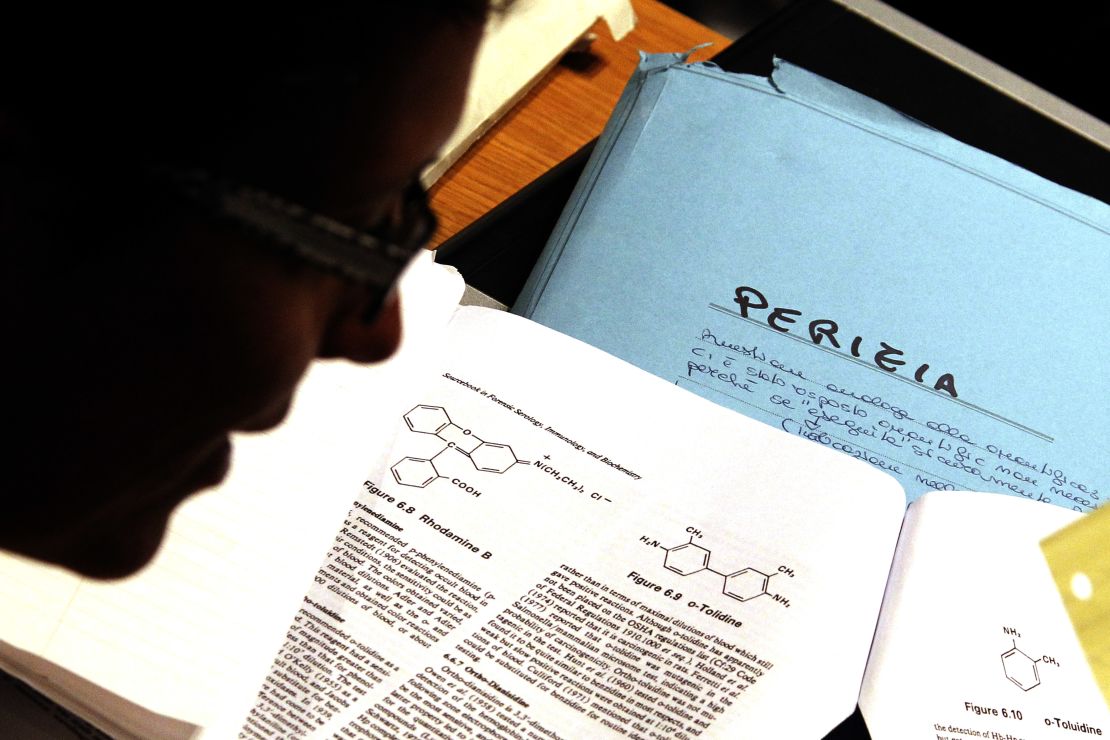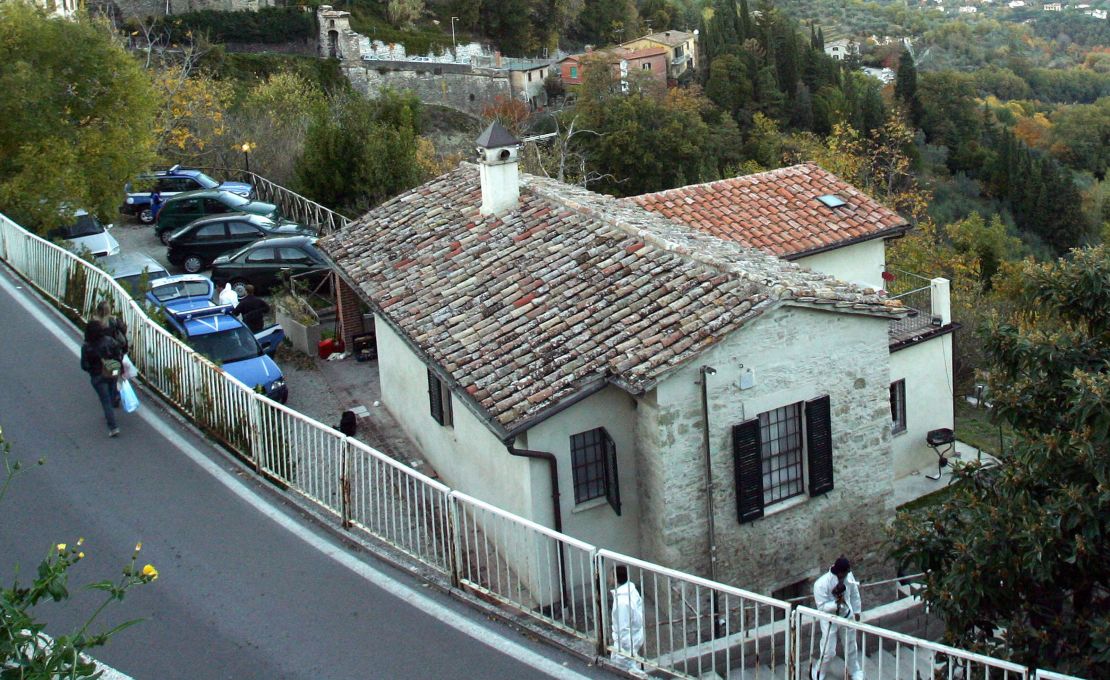Story highlights
The verdict in Amanda Knox's appeal will be heard after the defendant statements next week
American is charged with the murder of British exchange student Meredith Kercher
Kercher had her throat cut in the house she shared with Knox in Italy in 2007
Knox and her former boyfriend Raffaele Sollecito are fighting to overturn their 2009 convictions
The evidence, and the claims:
The knife
Prosecution says: A knife found in co-defendant Raffaele Sollecito’s house has the DNA of Amanda Knox on the handle and of victim Meredith Kercher on the blade, suggesting it’s the murder weapon.
Defense says: The knife doesn’t match the shape and size of wounds on Kercher’s body or an outline of the knife left on her bed. The defense also presented experts who said DNA on the blade was too small to be definitive.
DNA on Kercher’s bra clasp
Prosecution says: A bra clasp that was ripped from Kercher’s bra and found on the floor of her room has DNA of Raffaele Sollecito on it, proving he was in the room when she was killed.

Defense says: The bra clasp is contaminated and essentially tainted evidence because it was moved around the crime scene and left there for more than six weeks before it was picked up as evidence.
Knox’s confession
Prosecution says: During her interrogation, Knox said she could hear Kercher screaming. She also pointed the finger early on at Patrick Lumumba, who was eventually released. The prosecution said Knox’s false statement proves she is lying and was at the home when Kercher was killed.
Defense says: Knox’s statements were made when she was asked to imagine what would have happened that night in her apartment. The defense maintains Knox pointed the finger at Lumumba because she was confused and pressured. Eventually the confession was thrown out because Knox was not questioned with a lawyer present.
Bloody footprint on bathroom rug
Prosecution says: The prosecution attributed a bloody footprint on a rug in the bathroom to Sollecito, which they say proves he was there at the time of the murder.
Defense says: Sollecito’s lawyers presented forensic experts who said the print is in no way a match to Sollecito, but instead a match to Rudy Guede, who was convicted separately in the case. The defense focused on Sollecito’s hammer toe, which they say wouldn’t leave an imprint like the print found on the mat.

The window
Prosecution says: A broken window in the home Knox shared with Kercher was an attempt by the American to stage a break-in as a cover for the murder. The prosecution maintains it would be impossible for someone to break the window and climb through the window as proposed by the defense.
Defense says: The window was broken by Guede, a known drifter who had broken into homes before. Defense expert Francesco Pasquali simulated how glass would break if a rock were thrown from the outside. His testimony included that he believes a burglar could have thrown a rock that way, not from the inside (to stage a robbery) as the prosecution maintains.
Allegations of crime scene contamination
Defense says: The defense has argued that several pieces of key DNA were contaminated at the scene. Crime scene video shows investigators sometimes not wearing gloves or hair coverings, prodding their fingers in Kercher’s wounds, leaving key pieces of evidence at the scene for weeks and moving them around, and at one point breaking a window for no reason.
Prosecution says: The prosecution has argued that all the evidence was indeed properly handled and that it isn’t their job to prove the crime scene work was good enough. Instead, they say, that’s the job of the defense.
Bloody shoe print in Kercher’s room
Prosecution says: The bloody shoe print found next to Kercher’s body belonged to Sollecito and placed him in Kercher’s room when she was murdered.
Defense says: After Guede, a man from the Ivory Coast who was convicted in a separate trial for murdering Kercher, was found to have a shoe box for shoes matching the print, they argued for a re-examination of the print. Francesco Vinci, a coroner and forensic specialist for Sollecito, testified he believes it was wrongly attributed to Sollecito and belongs to Guede.




